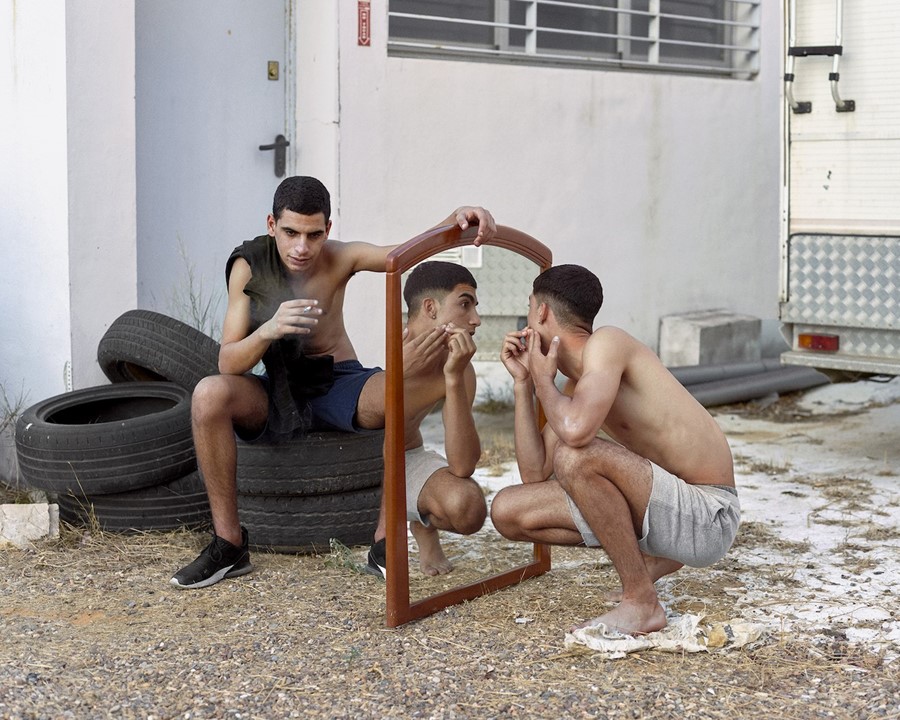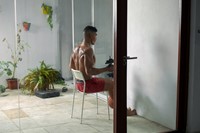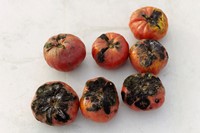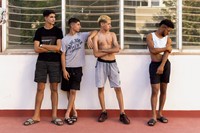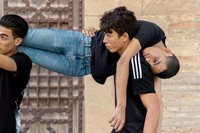Felipe Romero Beltrán’s new photo book captures the “shared brotherhood” of a group of young Moroccan migrants living in Seville’s government-run housing
In early 2020, Madrid-based photographer Felipe Romero Beltrán was invited to a workshop in Seville to share his experience of integrating into Spanish culture as a Colombian. There, he met a group of young Moroccan migrant men who had just relocated to Spain. Without a mutual language yet with a shared desire for a life in the same country, they communicated with hand gestures and connected through the boys’ interest in the photographer’s camera. They asked him about being Colombian and Beltrán took their pictures for their Instagram accounts and to send relatives back home.
Three years later, Beltrán has released Dialect, a photo book which chronicles his experience with these nine young men who lived in government-run housing while they waited for their migrant documents. “Part of the project is about reflecting the sense of closure and limbo these young men had to suddenly endure after crossing the sea for a new life,” Beltrán tells AnOther. The book, which is published by Loose Joints, features the subjects’ daily lives as they fluctuate between monotony and play under the shadow of bureaucratic scrutiny.
The barebones architectural complex is emphasized in the photographer’s shots of abrupt interior details, such as crumbling concrete corners, rotten fruits, and haphazardly made beds. Around such imposing decay, the boys pursue their daily tasks of shaving, exercising, and napping, sometimes topless under the sharp Sevillian sun, where time feels like it moves in slow motion. Elsewhere, Beltrán catches the men reenacting some of the physical gestures of their tolling journey across Gibraltar based on the stories they shared during the shoots.
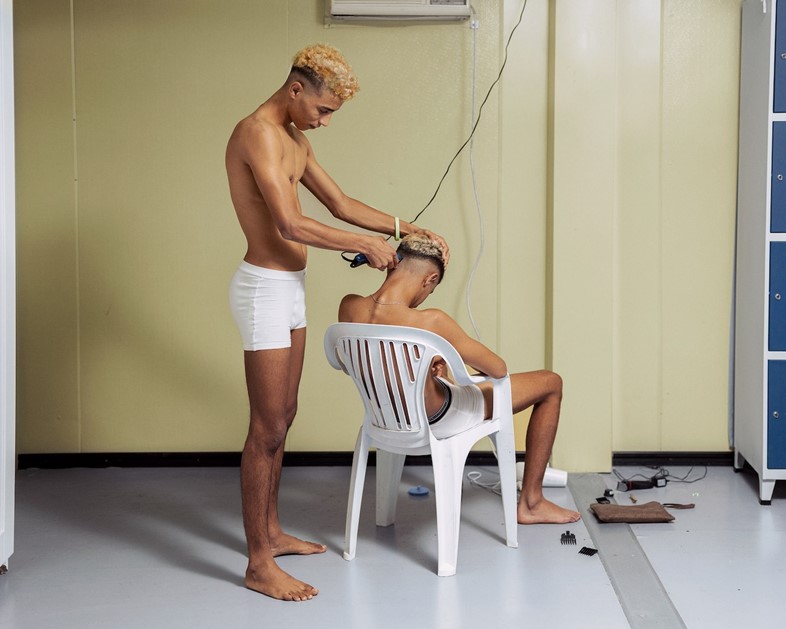
“I had to stick with certain rules to make pictures, such as setting the lights and placing the tripod, but then I had to wait for something to happen within the situation or the scenario in front of me,” the artist adds. “Most of the gestures and postures eventually came out of a collaboration.” The series’ composed theatricality recalls the saintly figures of Renaissance paintings, filtered through contemporary attires and official restraints. “The religious iconography surrounding Seville influenced me when I was not even aware,” the photographer says about his images’ unintentional nod to biblical representations in classical art. In fact, blurring this duality between the everyday and the grotesque was Beltrán’s intention in overlapping the mundane with the traumatic. “There are differences between natural and staged shots in terms of structure, but I also wanted to complicate the workings of documentary photography as an observer of reality.”
The running thread across all the images is the camaraderie and vulnerability between the young men, who face unpredictable futures in a foreign land where they don’t speak the language. One image shows a helping hand offering a loaf of bread to a friend, or a playful invite for roughhousing – between lingering boredom and sought-after joys, the boys thrive on an agreed interdependency. “I gradually became amazed by the group’s shared brotherhood against their fragile and complicated state,” Beltrán says.

Dialect also includes chapters in which some of the subjects read pages from the Spanish immigration law. The stills from various videos show the young men struggle to grasp the text’s utterly complex language – a reality Beltrán also faced in his immigration process however with the privilege of being a native Spanish speaker. Another grouping of images depicts one of the boys teaching a professional female dancer the bodily configurations of crossing a border based on his own experience. Through his camera, Beltrán makes the case for freely drifting towards a new place and letting the body sway.
Dialect by Felipe Romero Beltrán is published by Loose Joints and is out now.
